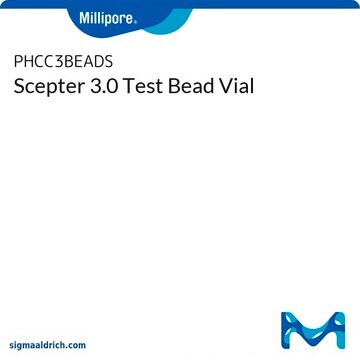추천 제품
제조업체/상표
Scepter
기술
cell counting: suitable
입자 크기
3-18 μm
호환성
for use with cells sized 4-12 μm
배송 상태
ambient
일반 설명
The Scepter cell counter’s screen displays:
Cell concentration
Average cell size
Average cell volume
Histogram of size or volume distribution
This system is intended for research use only and has been tested with cell types representative of those in use today.
FREE PACK OF 40μM Sensors included.
애플리케이션
Cell Culture
성분
1 Test Bead Vial
1 USB Cable
1 Downloadable Software
2 O-rings
50 Sensors (40µM)
시험 성적서(COA)
제품의 로트/배치 번호를 입력하여 시험 성적서(COA)을 검색하십시오. 로트 및 배치 번호는 제품 라벨에 있는 ‘로트’ 또는 ‘배치’라는 용어 뒤에서 찾을 수 있습니다.
문서
How do you assess the state of your cell culture? We’ve got some best practices to share.
암, 신경과학, 줄기 세포 연구 응용분야를 위한 세포 증식(BrdU, MTT, WST1), 세포 생존성, 세포 독성 실험용 세포 기반 분석법.
Cell based assays for cell proliferation (BrdU, MTT, WST1), cell viability and cytotoxicity experiments for applications in cancer, neuroscience and stem cell research.
프로토콜
The Scepter™ cell counter uses the Coulter principle of impedance-based particle detection to reliably and accurately count every cell in your sample.
Combine the ease of automated instrumentation with the accuracy of impedance-based cell counting using the Coulter principle in an affordable, handheld format.
자사의 과학자팀은 생명 과학, 재료 과학, 화학 합성, 크로마토그래피, 분석 및 기타 많은 영역을 포함한 모든 과학 분야에 경험이 있습니다..
고객지원팀으로 연락바랍니다.



